An RVer's Journey Going Paperless
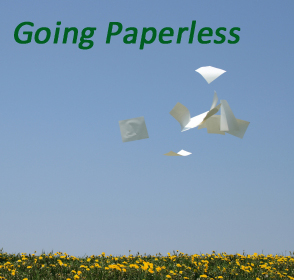
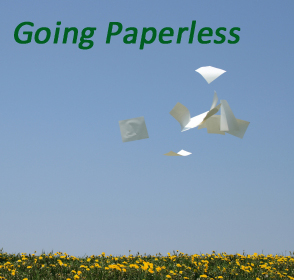
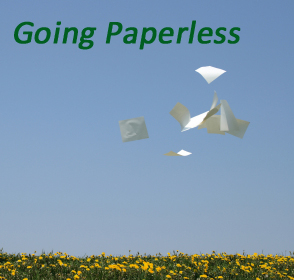
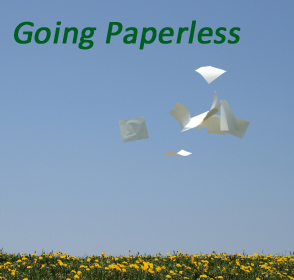
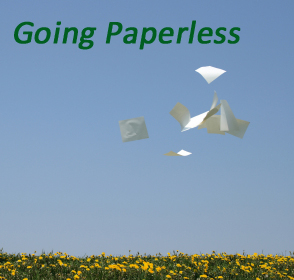 Getting mail, paying bills, banking, and getting cash - just some of the tasks of modern life. They're simple enough if you're at home, but if you travel a lot, getting paper mail, paying bills, and getting cash can become an added complexity. But thanks to the Internet and mobile communications, these tasks can be transformed to be less dependent on being at your home location. In this post, I'll share what I've done to turn these tasks into paperless and electronic tasks.
Getting mail, paying bills, banking, and getting cash - just some of the tasks of modern life. They're simple enough if you're at home, but if you travel a lot, getting paper mail, paying bills, and getting cash can become an added complexity. But thanks to the Internet and mobile communications, these tasks can be transformed to be less dependent on being at your home location. In this post, I'll share what I've done to turn these tasks into paperless and electronic tasks.
Let me first say, that while I have a background working in technology, it took awhile for me to embrace the paperless and electronic / mobile payment technology. It was a big change for this old Dawg. I still liked the security of holding a paper statement and writing a physical check when I wanted.
But, over the past 2 years, to make it easier to travel, I slowly migrated to a more paperless and electronic payment process. I did it slowly so I could build my trust, get used to using the tools / services, and establish a workflow process that allowed me to maintain the control and security that I wanted. And now, I much prefer it to what I was doing before. So here's a summary of what I've done.
Electronic Statements
One of the first things I did was find out what the businesses I use for recurring services like utilities, banking, credit cards, and investments, offered for paperless services. Most offer some form of electronic delivery of statements and bills via email. I signed up for electronic delivery for a select few to see how I liked it. Then I migrated all that I could to electronic delivery. It works great. I get an email or txt message when a bill or statement is ready. Its easy to view the statements or bills on line or from my smartphone. Most vendors store several months of statements so I can go back and review them if I want. This eliminated a lot of paper mail. The only downside it that I had to set up usernames and passwords for each business and had to figure out a way to keep track of and remember them.
Electronic Bill Payment
Once I went to electronic statements and bills, the next step was setting up electronic payments. My strategy for this was to have my recurring bills, the ones that tend to be the same each month, set up to auto pay on a single credit card. Most businesses offer this as an option and its easy to set up on the businesses web site. This reduces the number of payments I have to physically perform. I just need to pay the credit card bill once per month (which I pay electronically from my bank). The added benefit is that I use a cash back credit card that gives me 1% back on all purchases. Last year, I got back about $250. It sure beats buying stamps and envelopes.
You can set up this type of payment process with your bank. If the business can present an ebill to your bank, you can usually send an electronic payment from your bank, but I found the credit card process much easier and it gives me money back. There are a couple businesses that don't take credit card so I set them up with a ACH authorization on a checking account.
Mobile Banking and Electronic Payments
I maintain bank accounts at two institutions - a local community bank and a nationwide bank. Most of my bill paying (that doesn't go to a credit card) is done from the local bank. Both banks offer mobile and online access to all my accounts. I can check balances and transfer money between accounts all from my smartphone.
I have two checking accounts set up for bill paying - one for writing paper checks and debit purchases (for incidentals and food) and one for electronic payments. I wanted to closely manage the funding of the electronic payment account. Each month, when I get emails about bills that are due, I review them, and tally up all the bills, There's only about 3-4 that don't go on a credit card. I electronically transfer just enough money into the electronic payment checking account and then make the payments from that account. Its a once a month process and the account usually only holds money for about a week while payments are being made. I did it this so that in case one of the businesses gets hacked with my bank account info, my account only has a limited amount of funds in it for a brief amount of time. Call me overly paranoid, but this is the only account that I have set up for electronic payments.
If I need cash while traveling, I use an ATM or I find a branch office of the nationwide bank where I have an account. I can move money into this account from my smartphone and just walk in and cash a check or use one of their ATM's.
Documents
There are certain documents that I may need to access while traveling or that I want to maintain a duplicate copy of. Examples of these are things like insurance policies, vehicle titles, vehicle registrations, health care proxy, power of attorney, and copies of credit cards. I also like to keep copies of travel plans and itineraries on line. For paper documents, I use my all-in-one laser printer to scan copies of these documents and upload them to Google Drive. There are several choices for this type of service but I've chosen Google Drive as my electronic file cabinet. If you already have a Google account for Gmail, its easy to set up folders in Drive just like you have on your computer and upload documents to these folders. To keep the info private, make sure you don't set them up as shared. Google offers the first 15GB of storage for free (the equivalent of a typical thumb drive). I have the Google Drive App on my smartphone which keeps everything is sync and lets me access everything from my smartphone.
I use Evernote as my electronic tackboard. This is where checklists, to-do lists, shopping lists, idea lists, and reminders go. I also use it for recipes. When I see something that I want to retain (something in print or in a store) it so easy to take a picture of it with my smartphone and upload it to Evernote. I have access to all my notebooks from my desktop, laptop, and smartphone. This is a free service and very handy, once you get in the habit of using it.
All this effort has really cut down on my paper mail, the paper I handle, and check writing. I like what I've done and found very good services and capabilities that I can stay with. I can get most of my important mail electronically and pay my bills from anywhere. I think this is key - find out what works for you and then stick with it. For me, going paperless is not about using scanners and equipment to get rid of all the old paper documents. Its about selecting and setting up services and then using these services to get rid of the new paper. Going paperless can make traveling (and your life) so much easier.
Follow more of my journeys at: http://jdawgjourneys.blogspot.com/



0 Comments
Recommended Comments
There are no comments to display.
Please sign in to comment
You will be able to leave a comment after signing in
Sign In Now